Inventory: Food and drink / Global
Sweet dreams
We meet the Portuguese proprietor who turns his culinary fantasies into mouthwatering reality at his colourful Comporta restaurant. Plus: the urban creamery in Philly that churns out prize-winning cheese, a sprawling Sicilian stay and a food hall in Toronto that really goes with the flow.
Deli Comporta
Portugal
Every once in a while, Miguel Guedes de Sousa’s ideas about food and hospitality come to him in his dreams. In those moments, the man behind peerless Portuguese hospitality group JNCQuoi phones his executive chef and announces that he’s hungry. “It doesn’t matter if it’s six in the morning – Miguel describes in detail the dish he dreamed of, I prepare it, then he tastes it,” says Jerónimo Ferreira, who was the chef at Lisbon’s Ritz before joining the group. He is now leading Deli Comporta, which opened this summer.
Maximalism has become a hallmark at JNCQuoi properties, which include a hospitality complex and club in Lisbon, and a hotel and beach club in Comporta. For the new deli, Guedes de Sousa says that he and his wife, Paula Amorim, wanted to launch something “different from anything ever created”. He says that it is a pop interpretation of the traditional working-class tasca restaurants of the Alentejo region mixed with an irreverent touch of “elitism for everybody”. In practice, it’s a fine place to sit on a bar stool and enjoy a gazpacho with spider crab or a beef carpaccio among a vibrant crowd, colourful textiles and vases painted by artist Susa Monteiro.
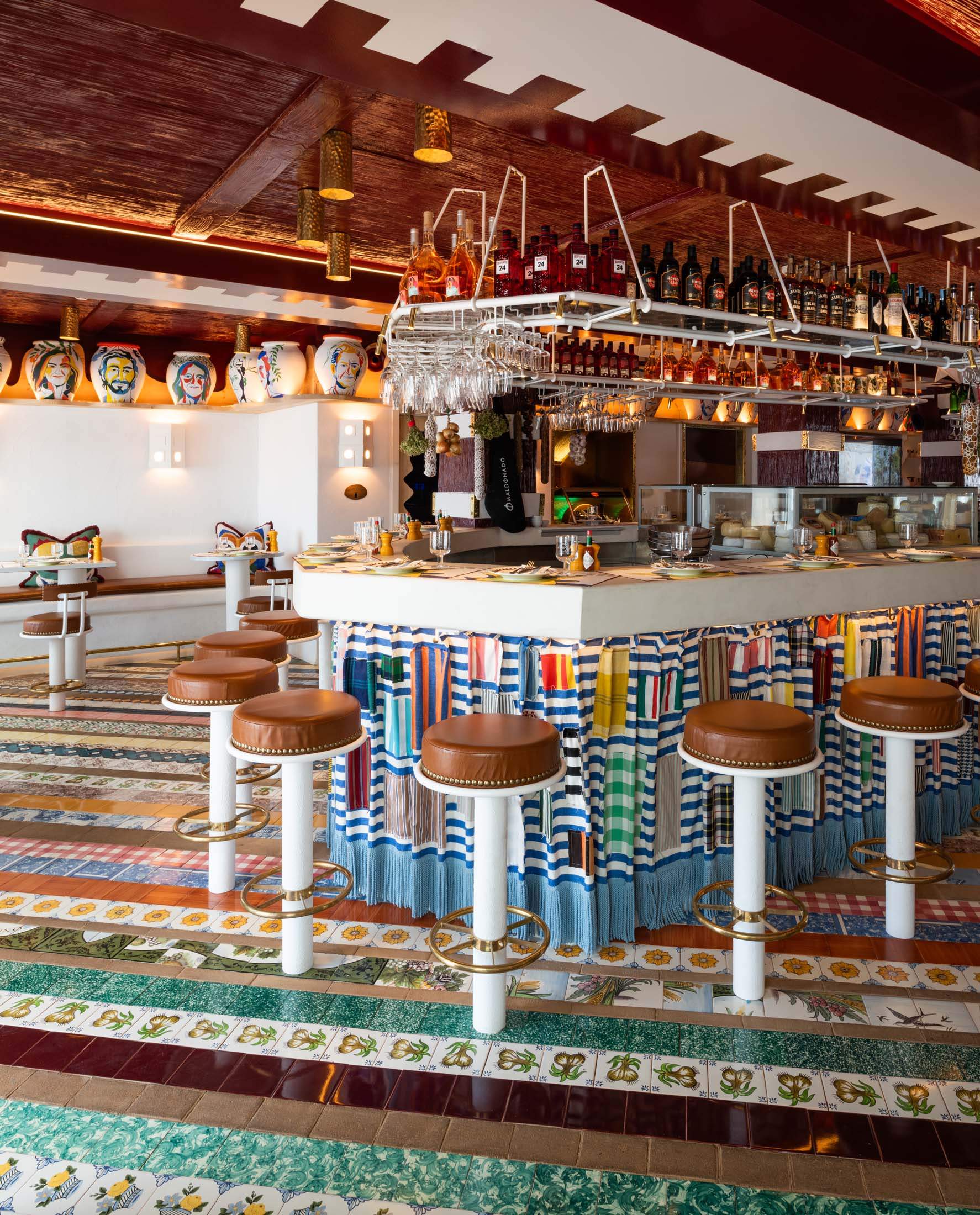
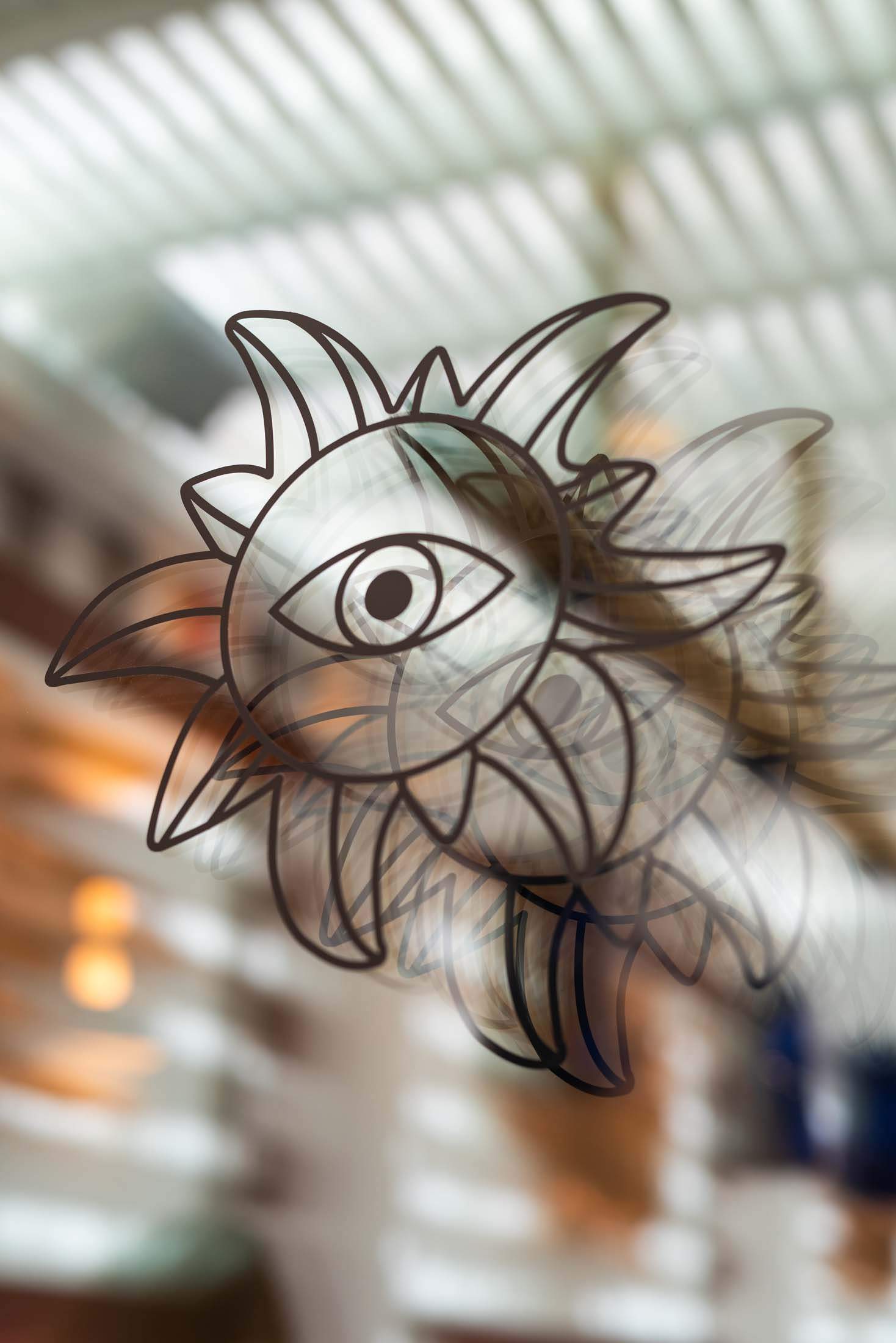
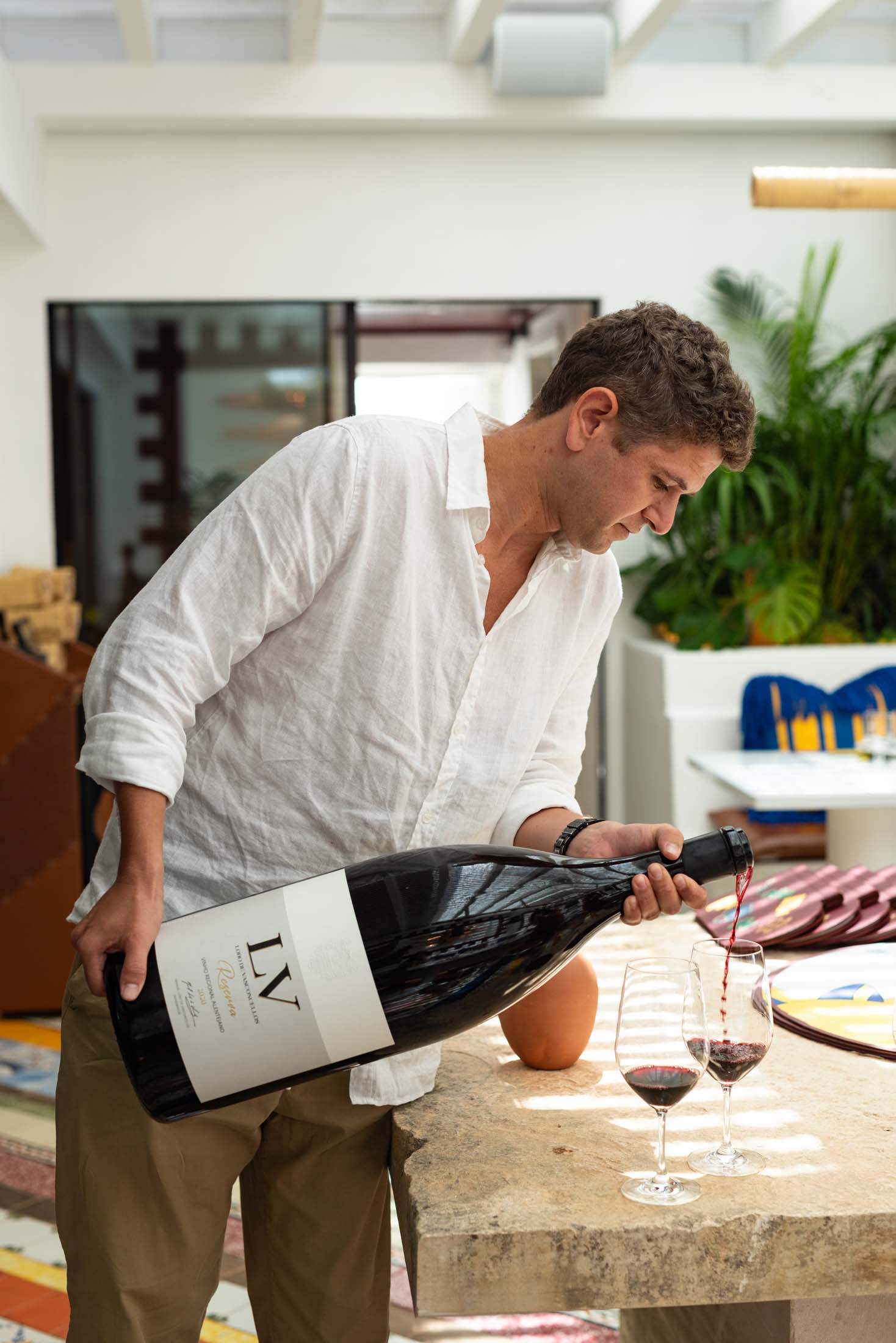
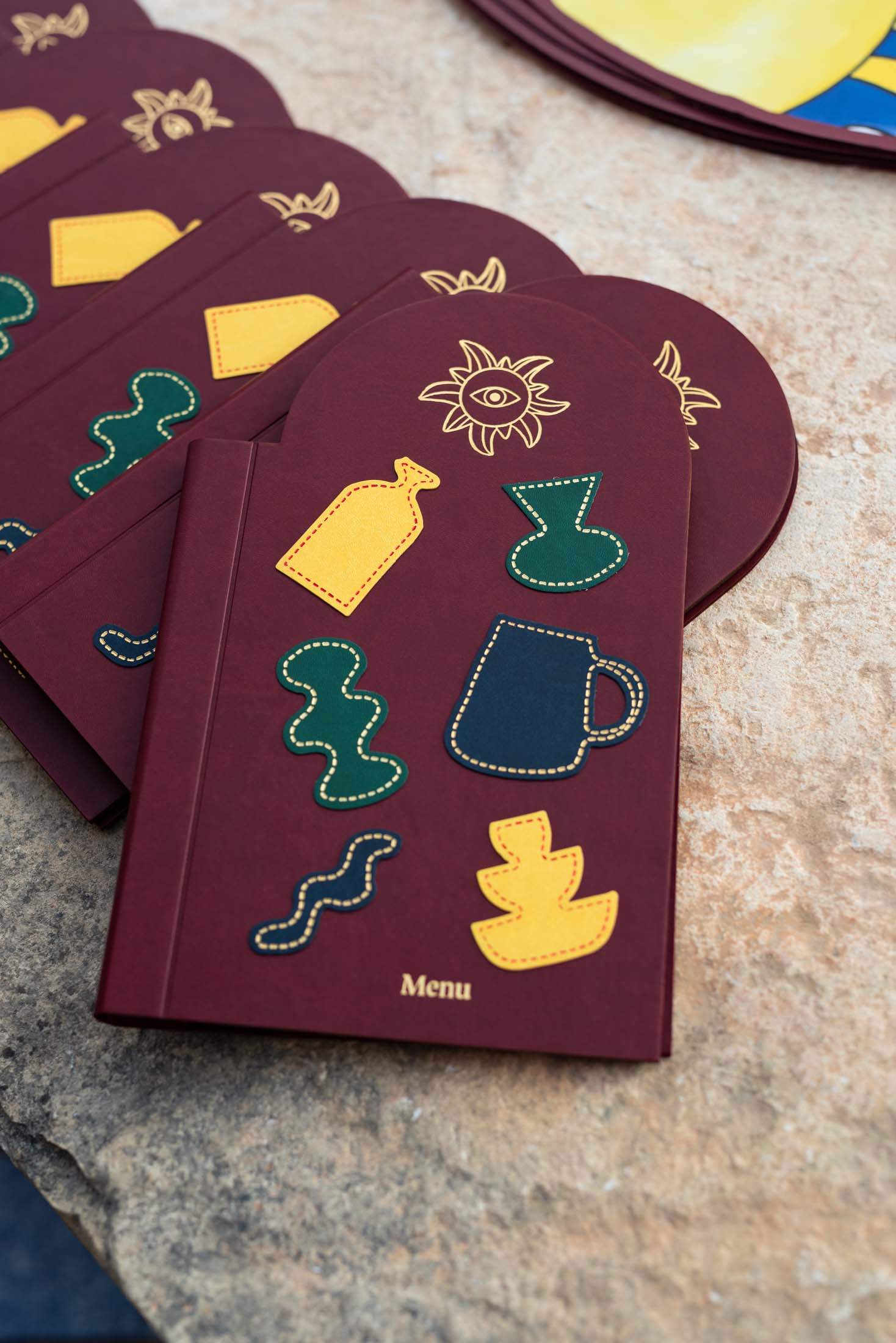
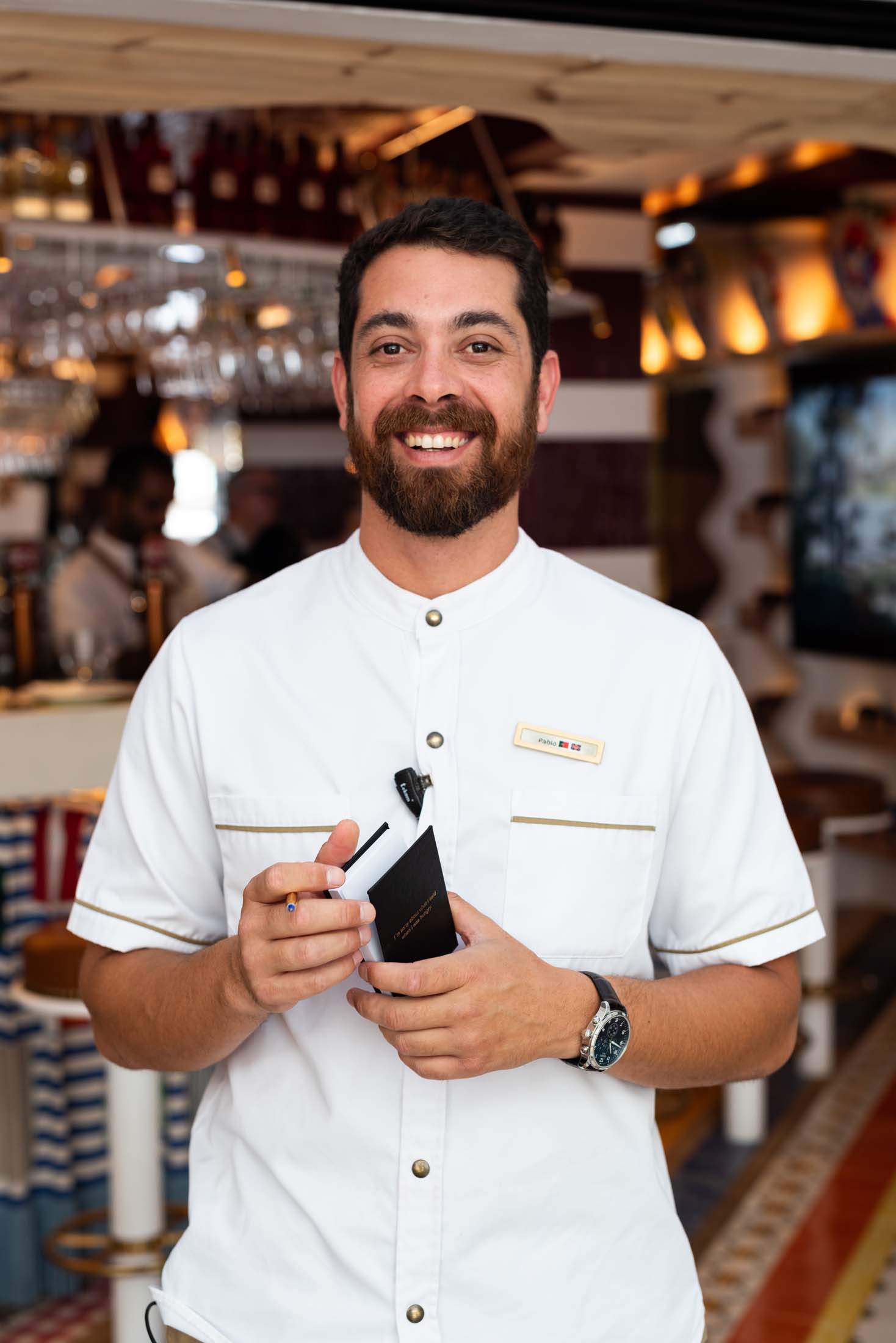
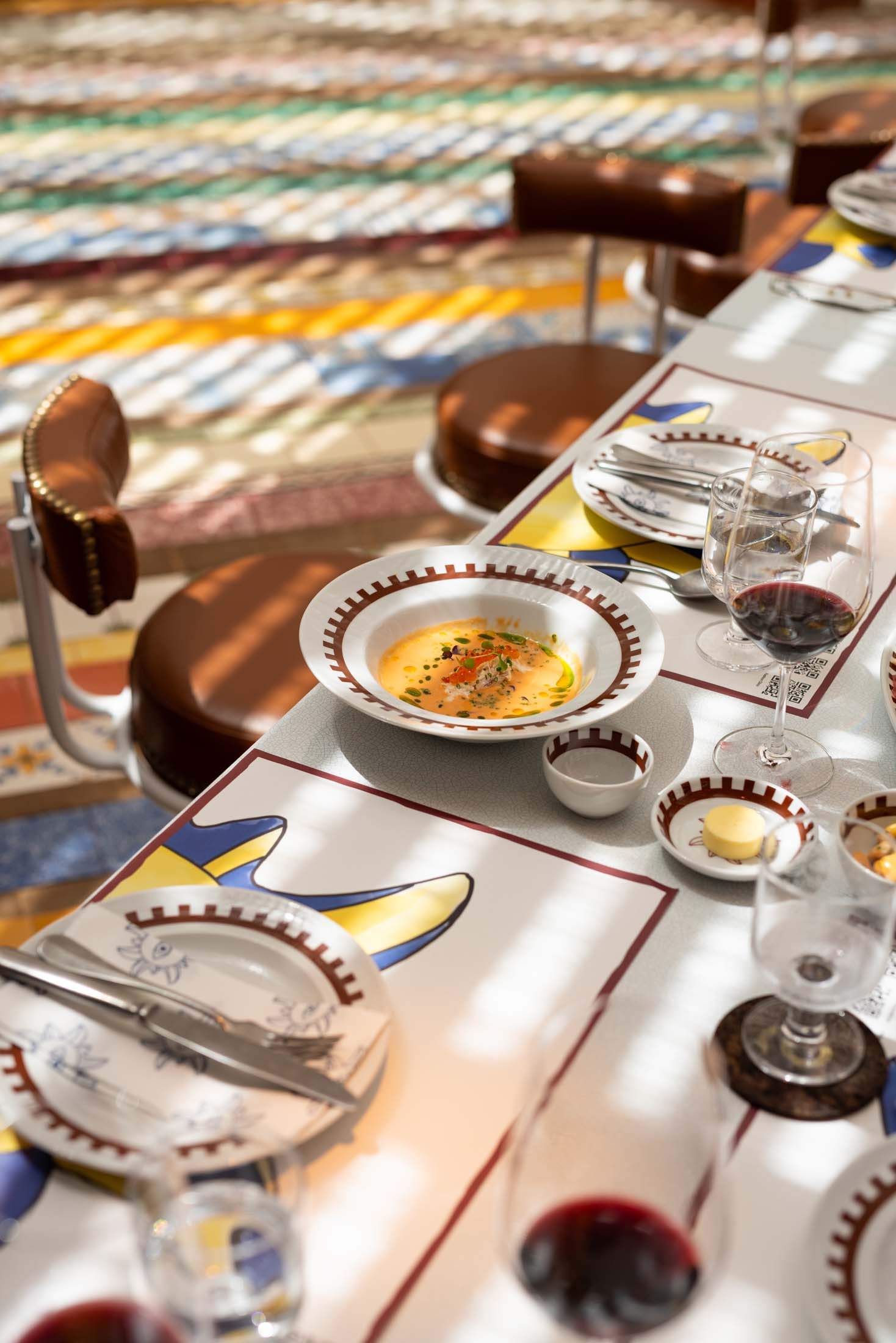
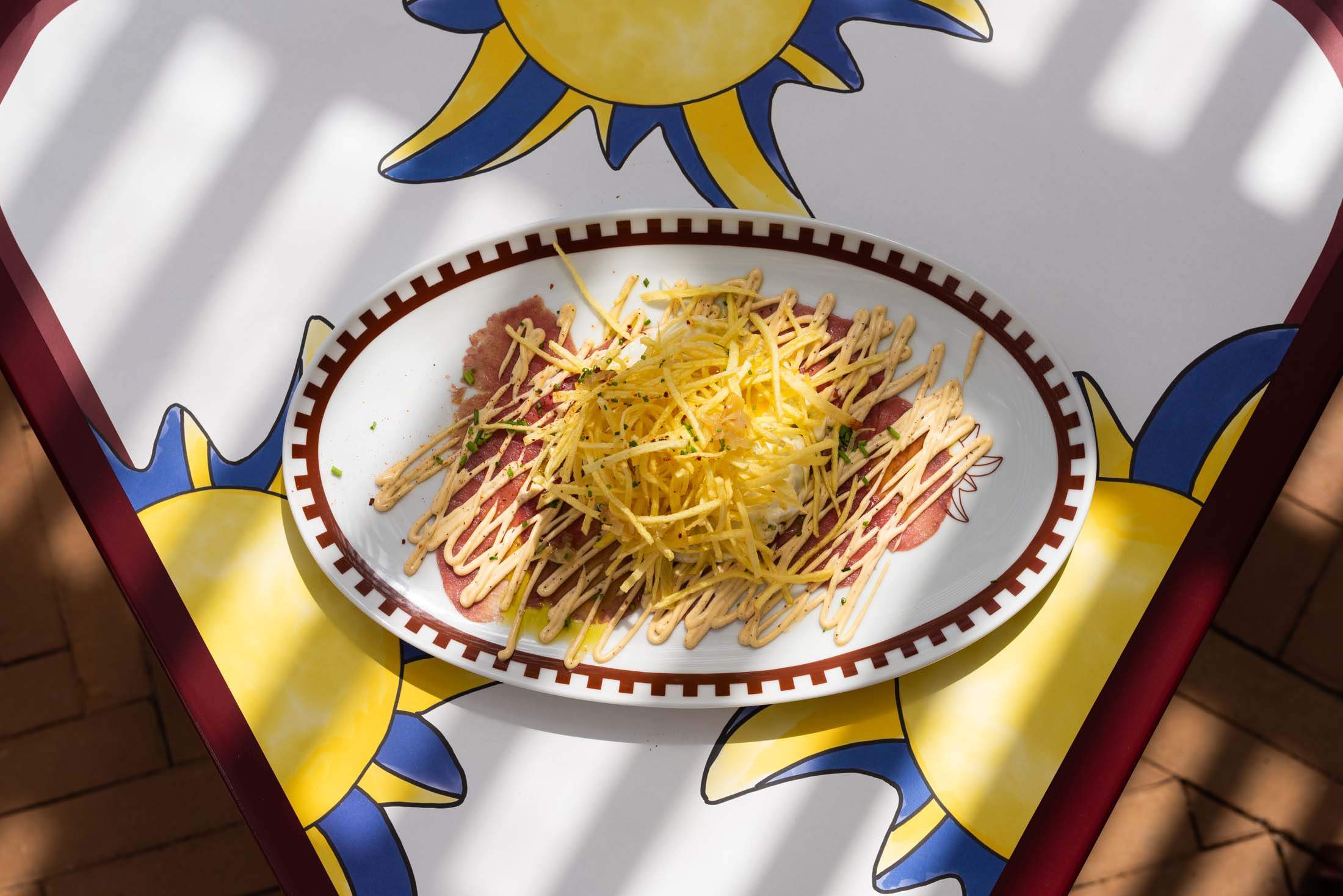
Whether it’s in Lisbon, or a 90-minute drive in Comporta, nothing ends up on a menu without Guedes de Sousa’s say so. “This is what I live for,” Guedes de Sousa tells Monocle, sitting at the breezy terrace of the new restaurant, drinking the “fifth or sixth” of his many daily espressos. His most recent dream is what he calls “pijama do mar”, a seafood take on the classic pijama dessert, a plateful of small portions of assorted sweets. This version combines clams, razor clams, chips, cream, white wine, chilli sauce and an egg. “It’s a bit like huevos rotos,” he says. “You’ll backflip when you try it.”
Belgian antiques-dealer-turned-designer Jean-Phillipe Demeyer of JP Demeyer & Co helped with the interiors, including several types of Viúva Lamego tiles, a handpainted plaster ceiling and colourful curtains from A Avó Veio Trabalhar. There’s also a Marshall jukebox and regular evening DJ sets.
Guedes de Sousa tells us that two other projects next to the Deli should be finished by 2028. “People have no idea that there are only a few restaurants and hotels in Comporta,” he says of the myth that the area is developing too quickly. “All we have to do is develop it in the right way.”
jncquoi.com
Perrystead Dairy
Philadelphia
Perrystead Dairy, an “urban creamery” in Philadelphia, has a vending machine in the garden of its cheesemaking facility, which offers an excellent cheese board at the push of a button. “As a child, I would ripen camembert on top of my parents’ fridge,” says founder Yoav Perry, a former an art director who went on to indulge a passion for fromage in 2021. Initially he imported rare cheesemaking ingredients from Europe but found that he was spending too much time chasing packages through customs, so decided to churn the cheese himself. “I set out to make an original American cheese,” he says.
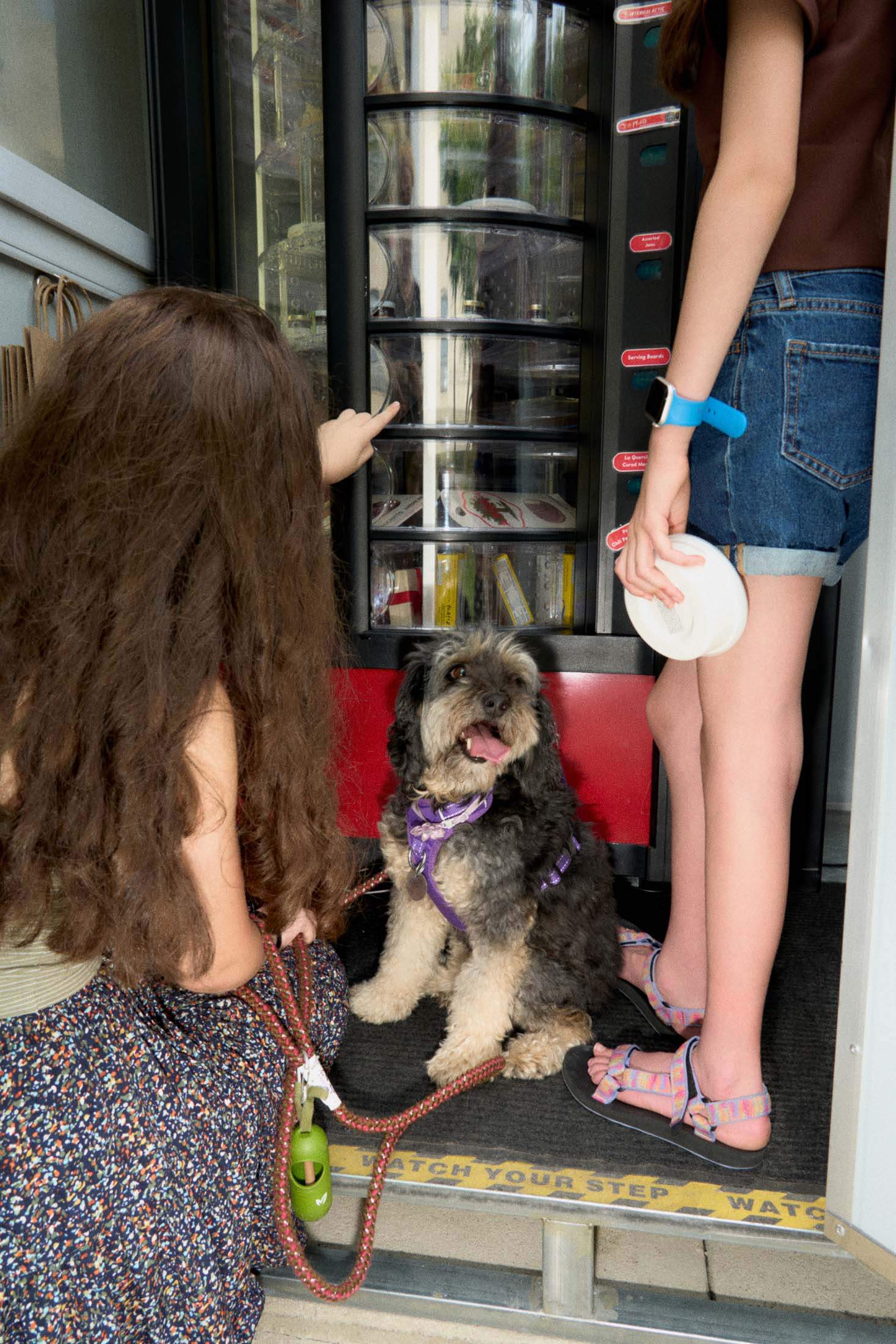
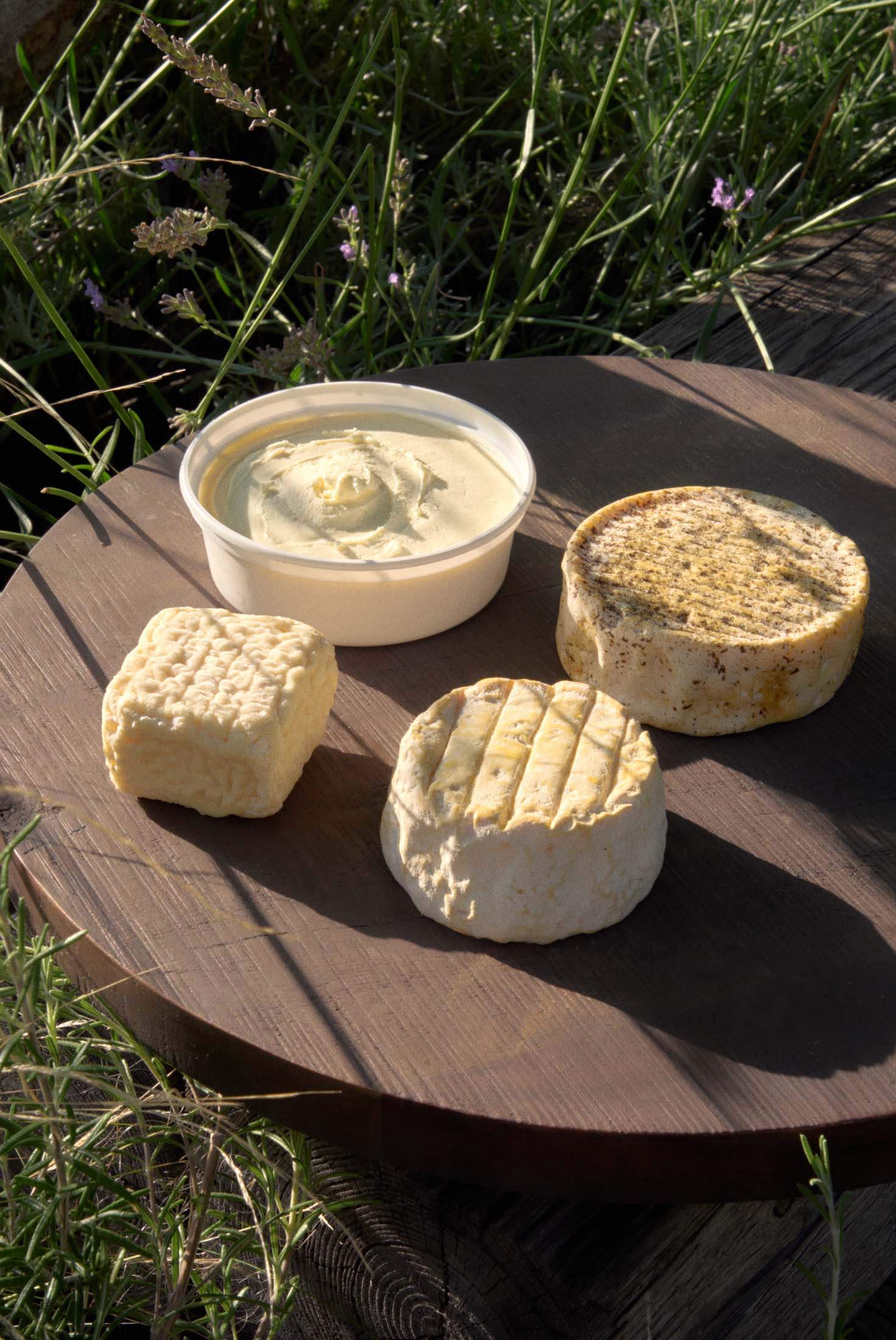
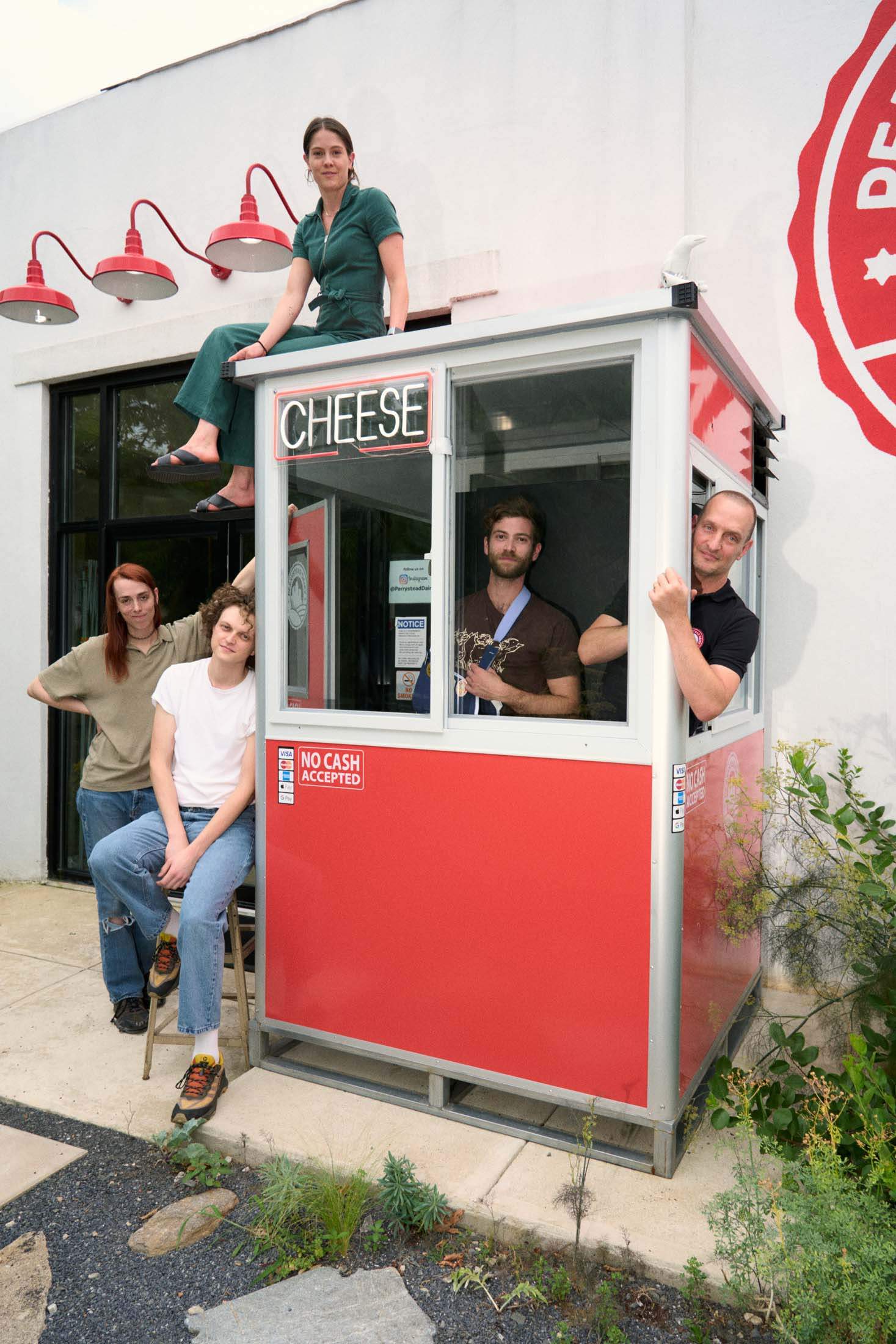
Seven seasonal varieties are made in Perrystead’s creamery in a converted stables. On the day when Monocle visits, the makers are laying out trays of cheese for a competition in Buffalo. The Atlantis, for instance, is washed in seawater from the North Atlantic and its skin is speckled with seaweed. These alpine-style wheels bagged a silver at the World Cheese Awards in Norway.
perrystead.com
Tramo
Madrid
An inconspicuous façade in the Spanish capital’s Prosperidad district welcomes visitors to this remarkable restaurant run by co-founders Felipe Turell and Javier Antequera. Tramo is based in a 1950s former garage. Its open-plan kitchen gives way to a dining hall with a restructured floor that scales upwards via a series of smartly designed tiers that conceal the ceramic ventilation system.

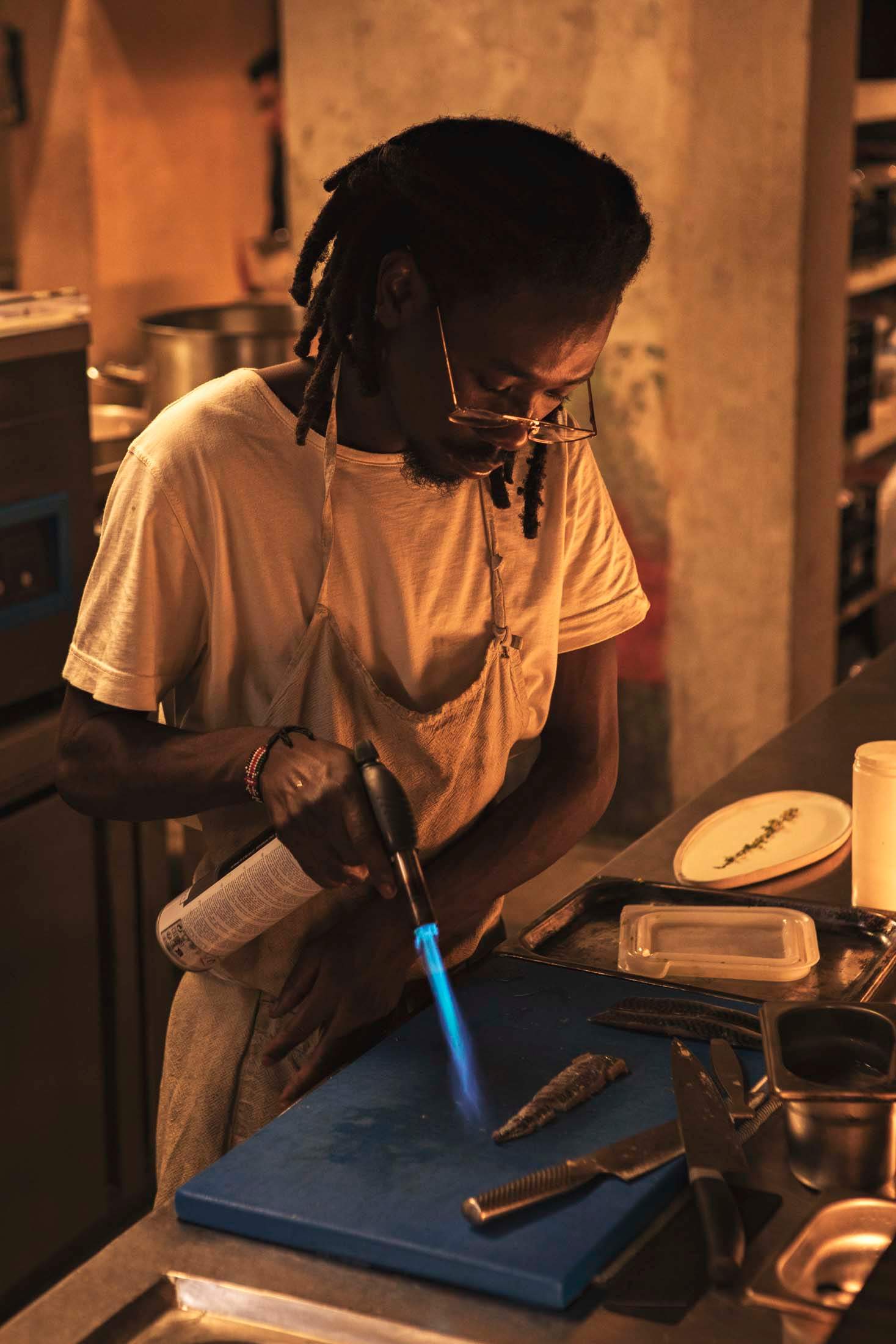
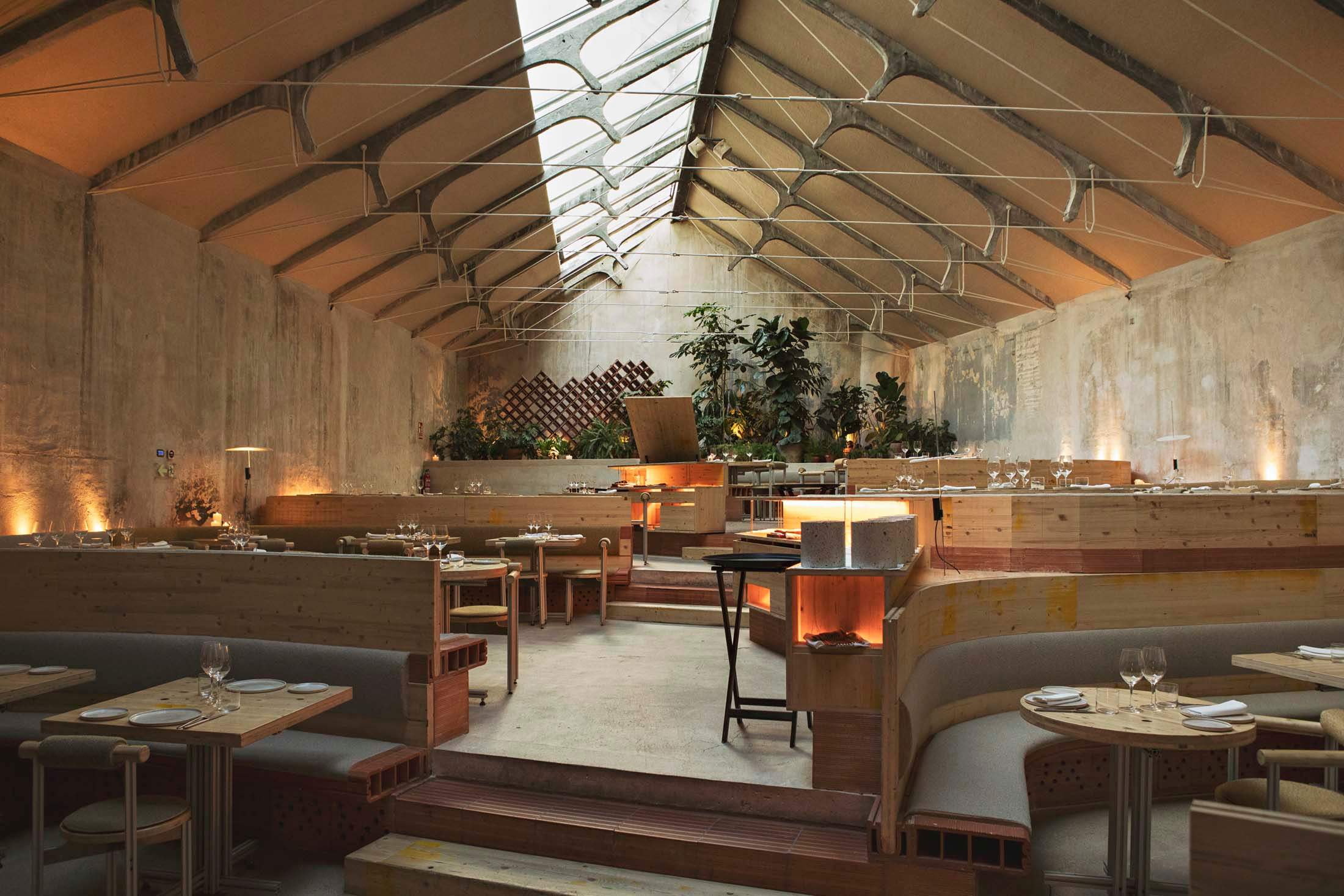
Every element has a story to tell. The custom furniture by Catalan designer Andreu Carulla is created from repurposed industrial materials. On the rear wall, an installation of ceramic diamond shapes mists the dry Madrid air. Meanwhile, bathroom washbasins funnel water into toilet cisterns and, every night, as the natural light from the skylight fades and evening bookings begin to flow, staff appoint tables using specially designed solar-charged lamps, creating a gradual, expansive spectacle of illumination.
The fare is Madrileño at heart – fresh, seasonal and wholesome. Dishes include grilled artichokes (from autumn to spring) served with egg yolk and guajillo chillies, lacon (pork shoulder) croquettes and a succulent flat-iron-pressed sea bass. For dessert, try the sweet goat’s-milk flan.
Carulla worked with architects from SelgasCano (best known for the 2015 iteration of London’s Serpentine Pavilion) and praises the freedom that the design team were given. “This was our way of going against the homogenisation of design, which fuels the uniformity of travel and hospitality,” he says. “Our remit was to create Tramo’s character, to make people feel better than when they enter – gastronomically, ergonomically and emotionally.”
espaciotramo.com
Waterworks Food Hall
Toronto
When Toronto’s city authorities mulled over what to do with one of its grand disused 1930s water-maintenance facilities, it turned to Eve Lewis. The Canadian property developer’s firm, Woodcliffe, has a reputation for revitalising historic buildings whose best days appear to be behind them.
“This is a magnificent heritage building,” says Lewis. It was the site’s previous incarnation, as a popular neighbourhood grocery market in the mid-1800s, that inspired her proposal for its renovation. “We envisioned it as more like a European food hall rather than, say, an event space or supermarket that we didn’t think would feel as open to the community. It makes a difference if you restore, repurpose and rejuvenate a building and add it back to the fabric of a neighbourhood.”
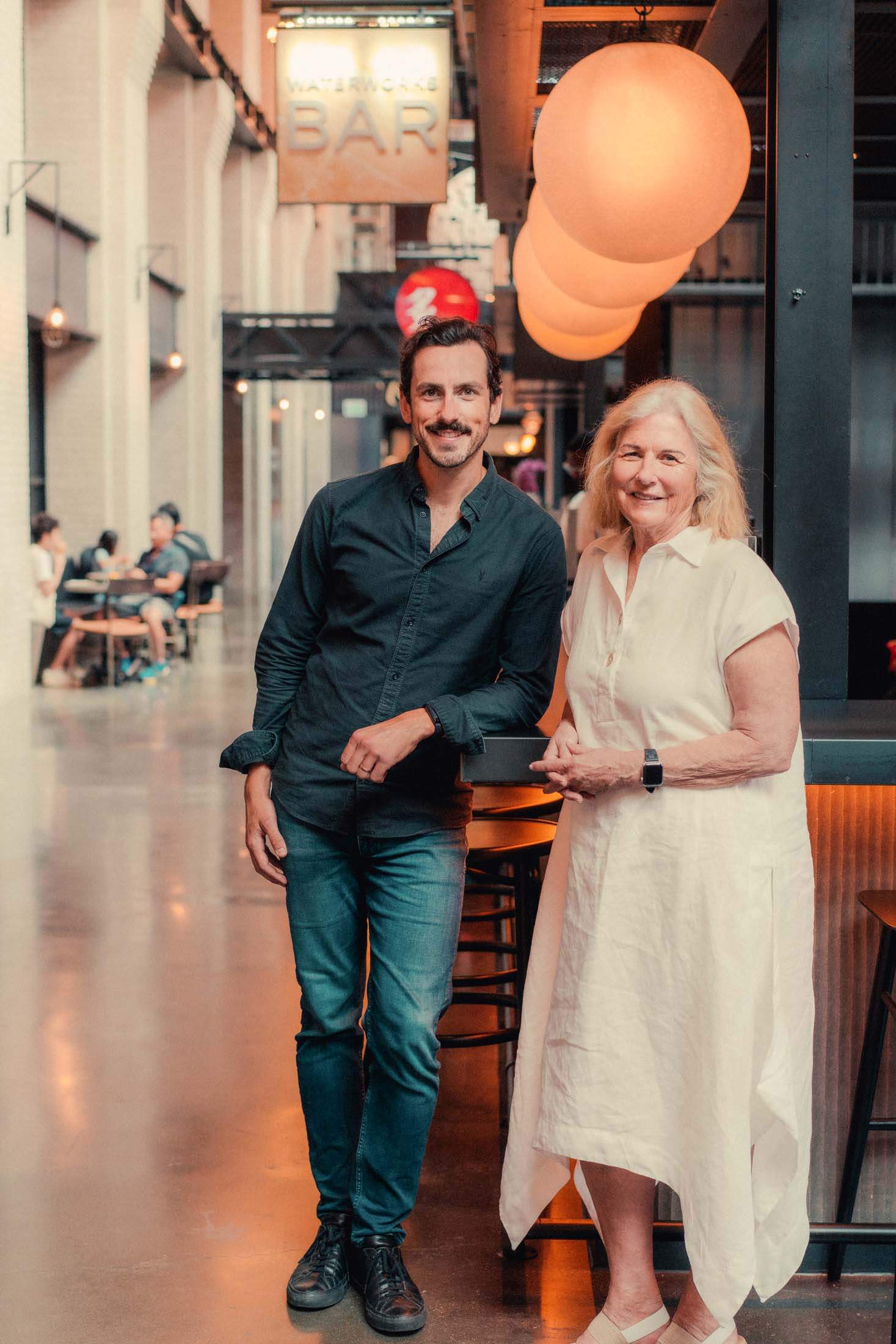
Woodcliffe’s Eve Lewis and Stratton Townley
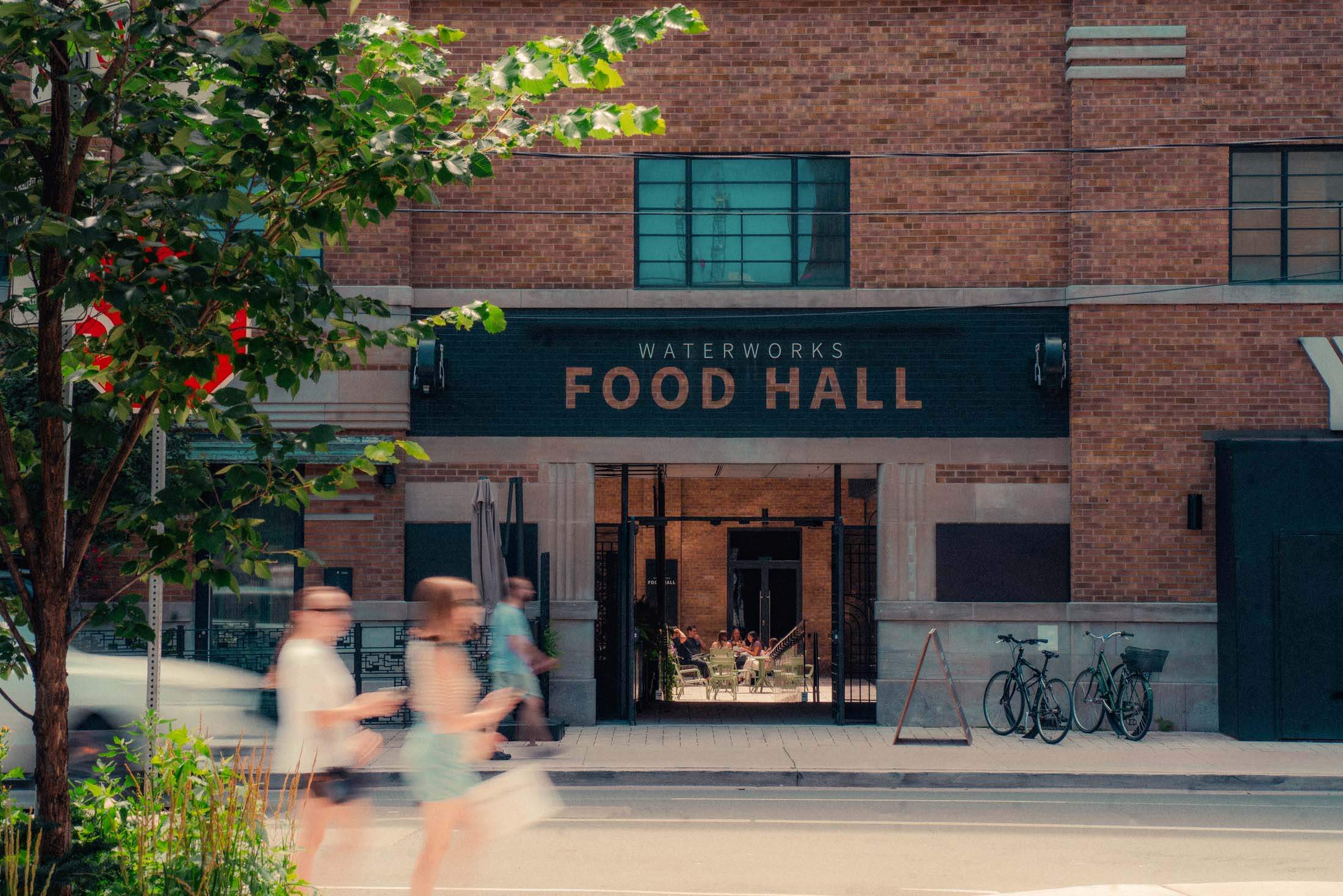
The restored 1930s building
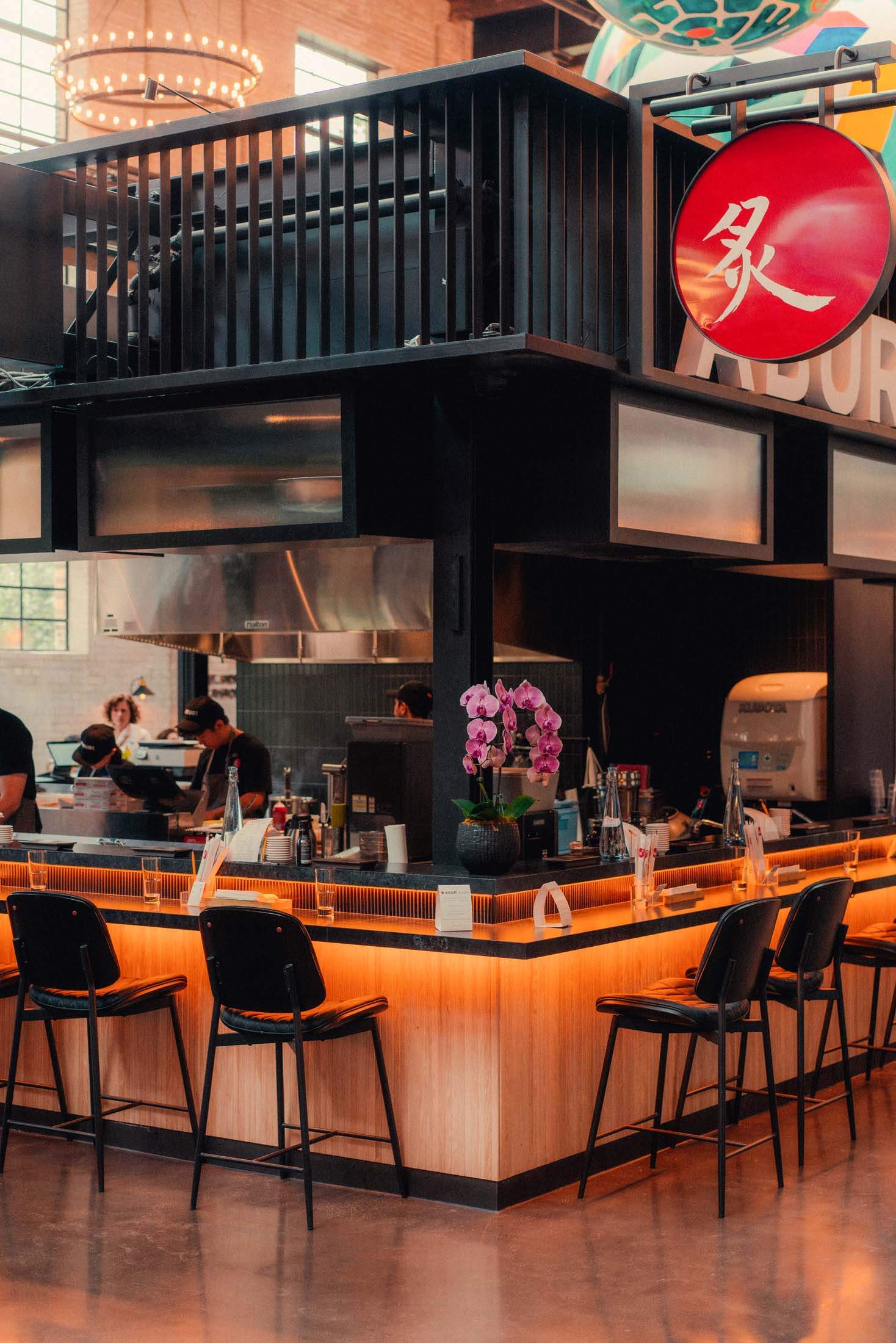
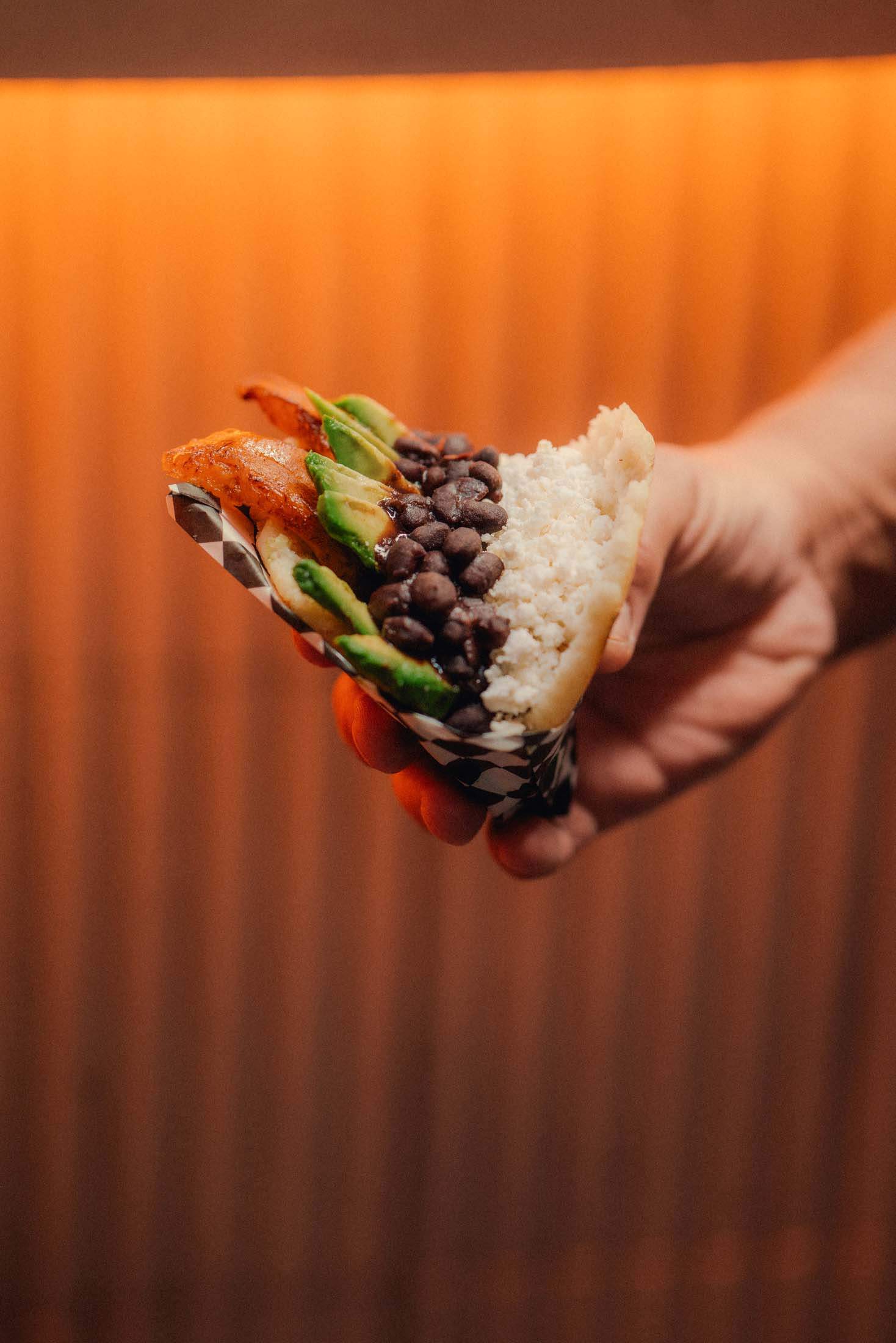
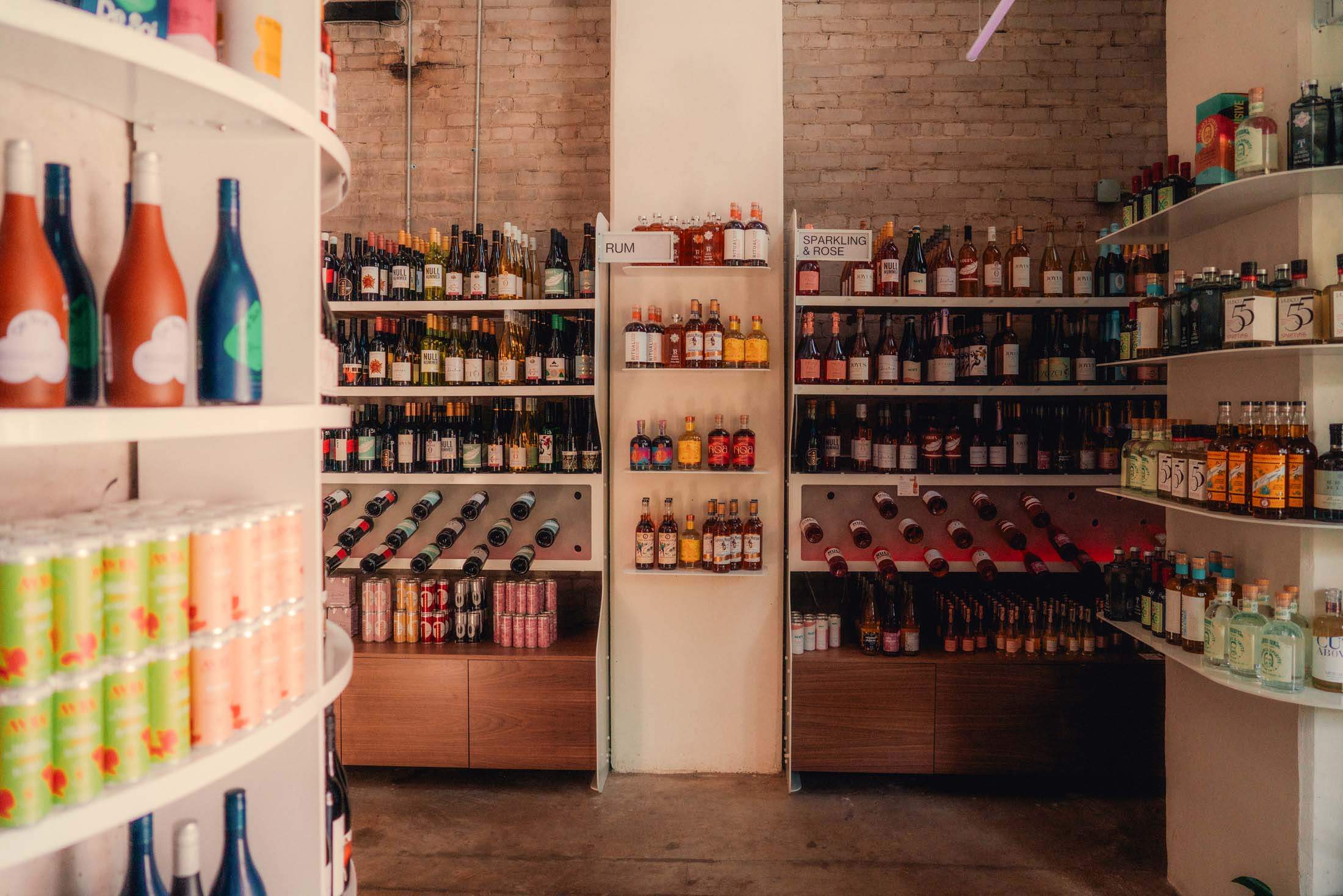
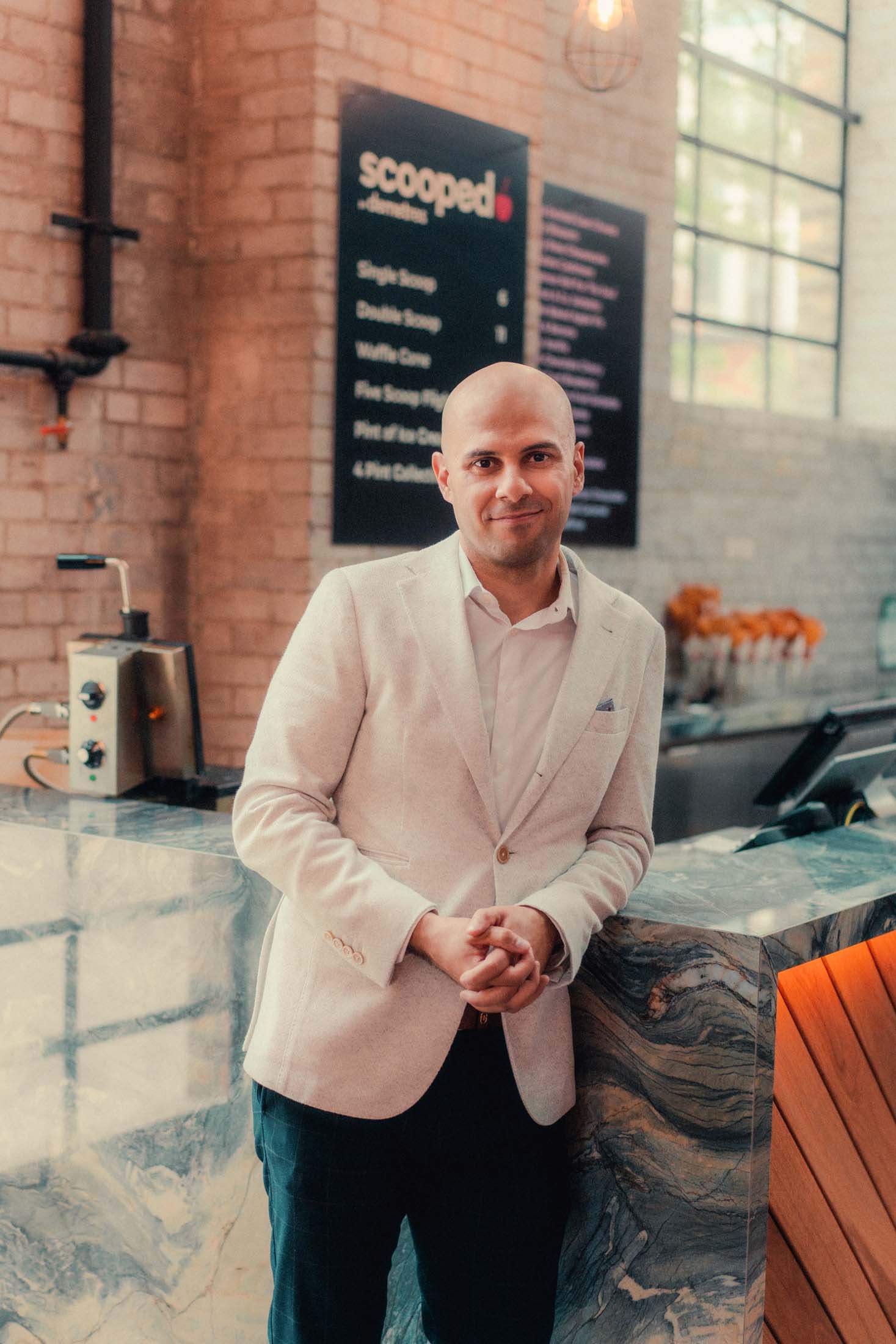

Waterworks opened in July in King West, one of the city’s exciting up-and-coming areas. The food hall is populated by offshoots of some of Toronto’s most beloved independent restaurants, bars and food-and-drink vendors, all arrayed around the 5,110 sq m premises. “There are not very many authentic food halls in Toronto,” says Lewis. So it is her visits to markets and food halls in the likes of Lisbon, Madrid and Copenhagen, where traditional flavours are as free to commingle as the customers, that have helped to hone the Waterworks offering.
What to try at Waterworks
1. Bánh xèo (crispy, stuffed Vietnamese rice pancakes) by Vit Béo
2. Unbeatable burgers and shakes by Harry’s Charbroiled
3. Venezuelan stuffed cornmeal cakes by The Arepa Republic
4. Sweet treats come courtesy of Scooped by Demetres, a Toronto-based ice cream maker
5. Cocktails by Civil Liberties or coffee and tipples by Boxcar Social
“There’s a lot of socialisation there, a lot of gaiety,” she adds. “We are fortunate that we are so multicultural in Toronto; you can get any food you want but you can’t get it in the same place. So we wanted to make people feel curious and inspired, and welcome them in.”
waterworksfoodhall.com
Susafa
Sicily
Susafa is a 17-room hotel and sprawling agricultural estate in the heart of Sicily near the Madonie regional park. It belongs to the Rizzuto family from Palermo, who have cultivated wheat here for five generations, at elevations of up to 850 metres above sea level.
Upon arrival, guests are greeted by golden fields of grain fanning out across the valley – it’s a scene one could easily mistake for Tuscany (cue Hans Zimmer’s theme from Gladiator). At the centre is a small green oasis where Susafa’s owner, Manfredi Rizzuto, has converted buildings previously home to sharecroppers and livestock into tasteful accommodation. “My idea was to capture the authentic spirit I remember when visiting as a child, without forgetting the importance agriculture has here,” he says.
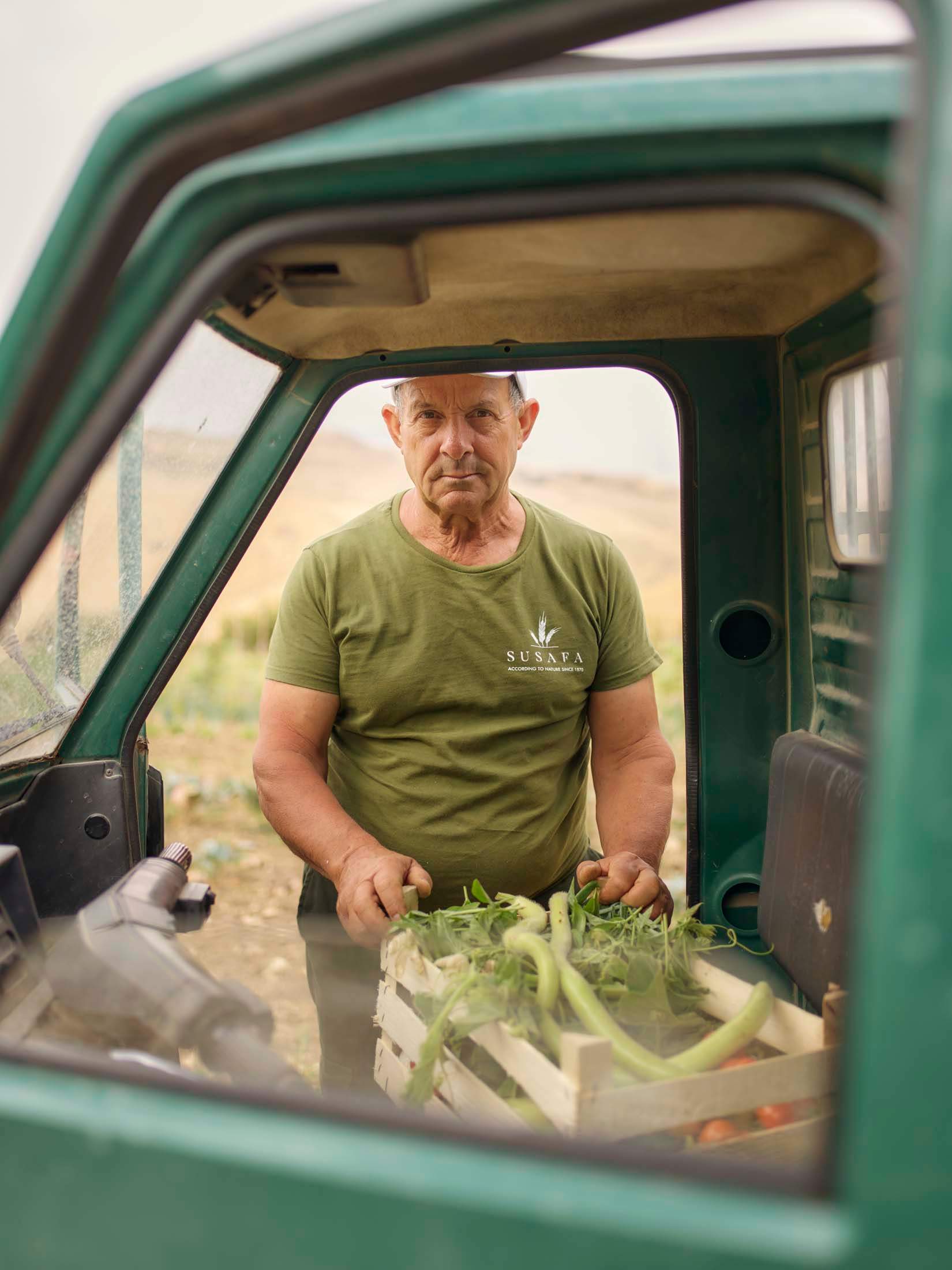
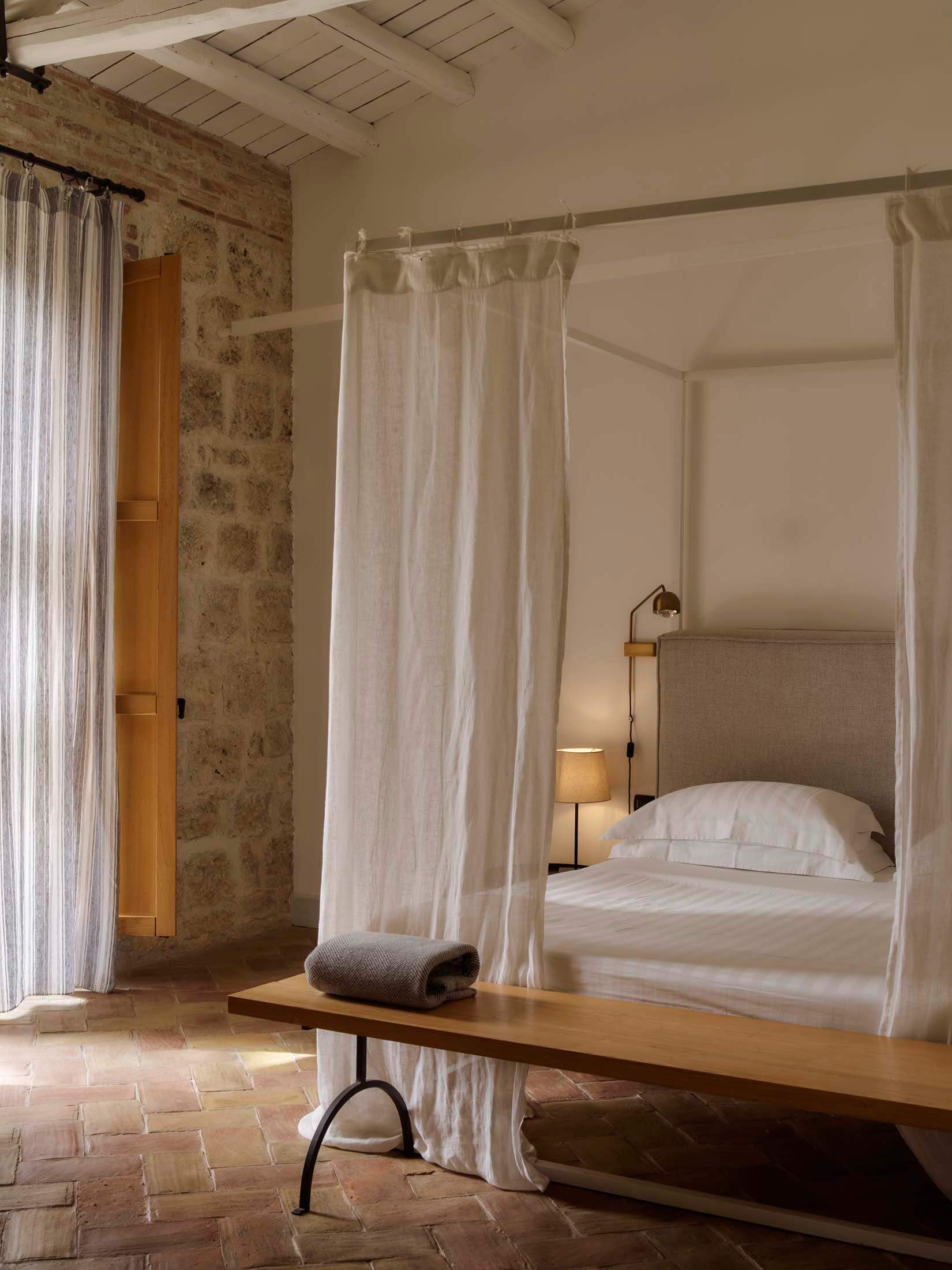
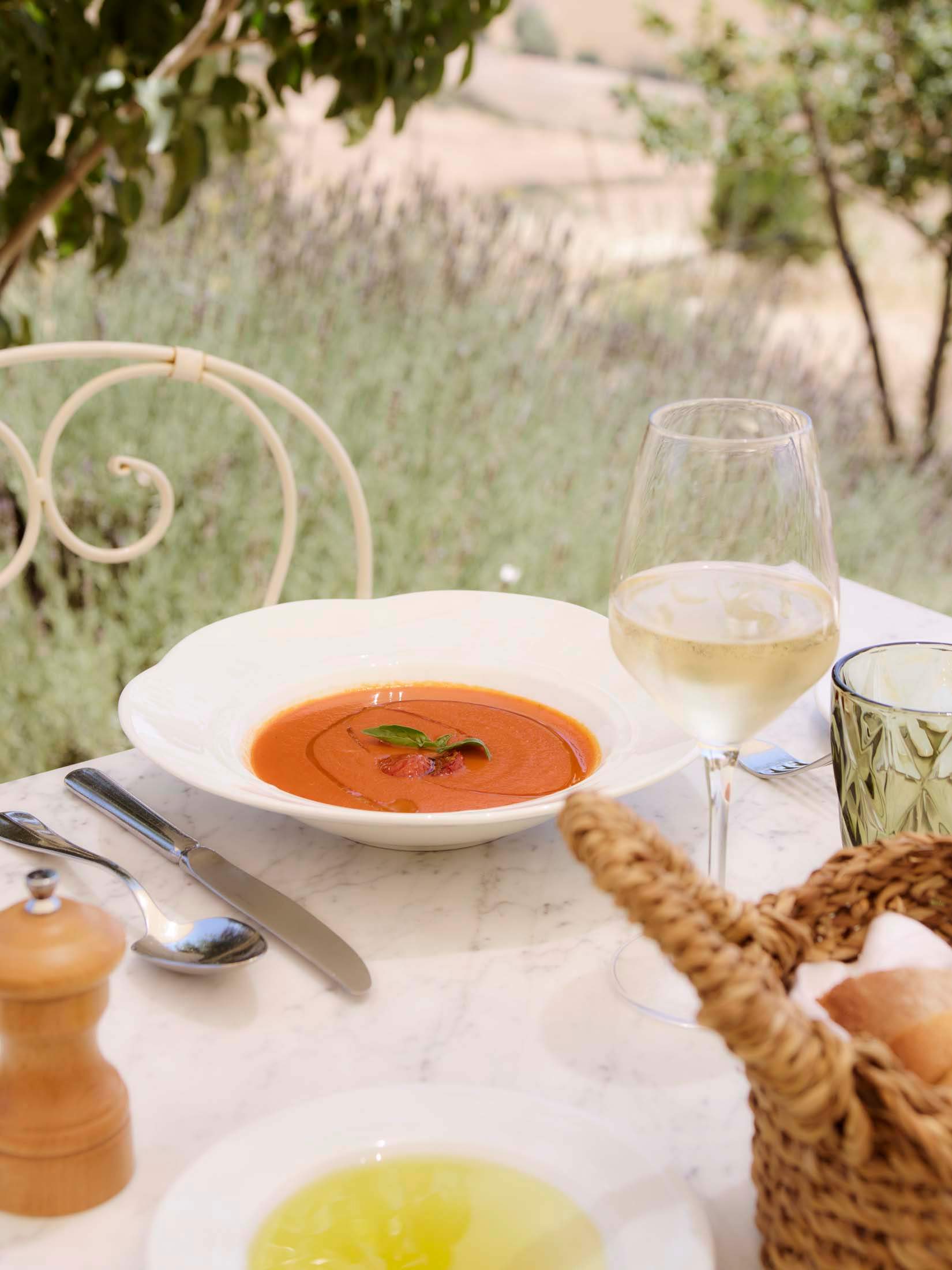
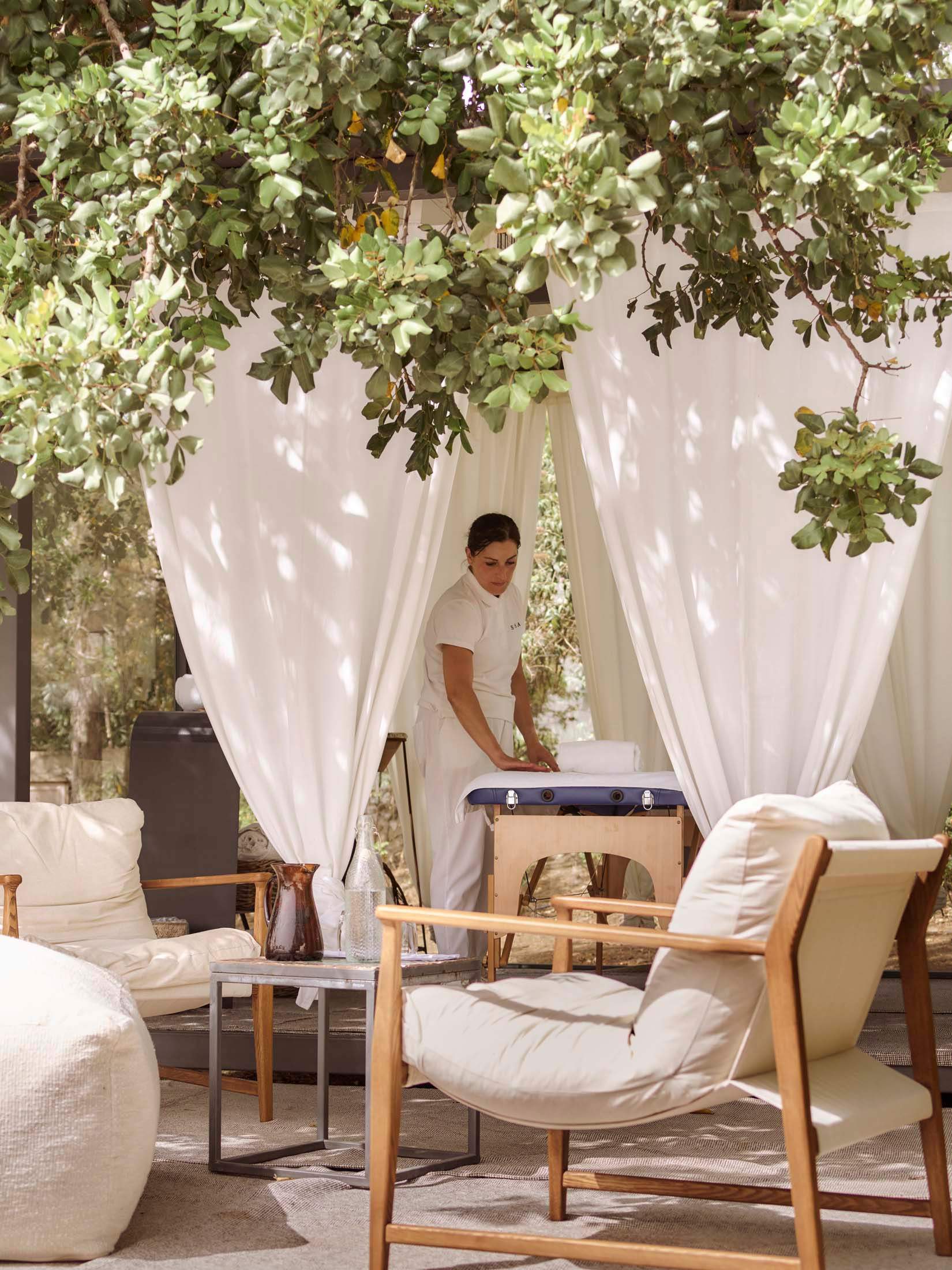

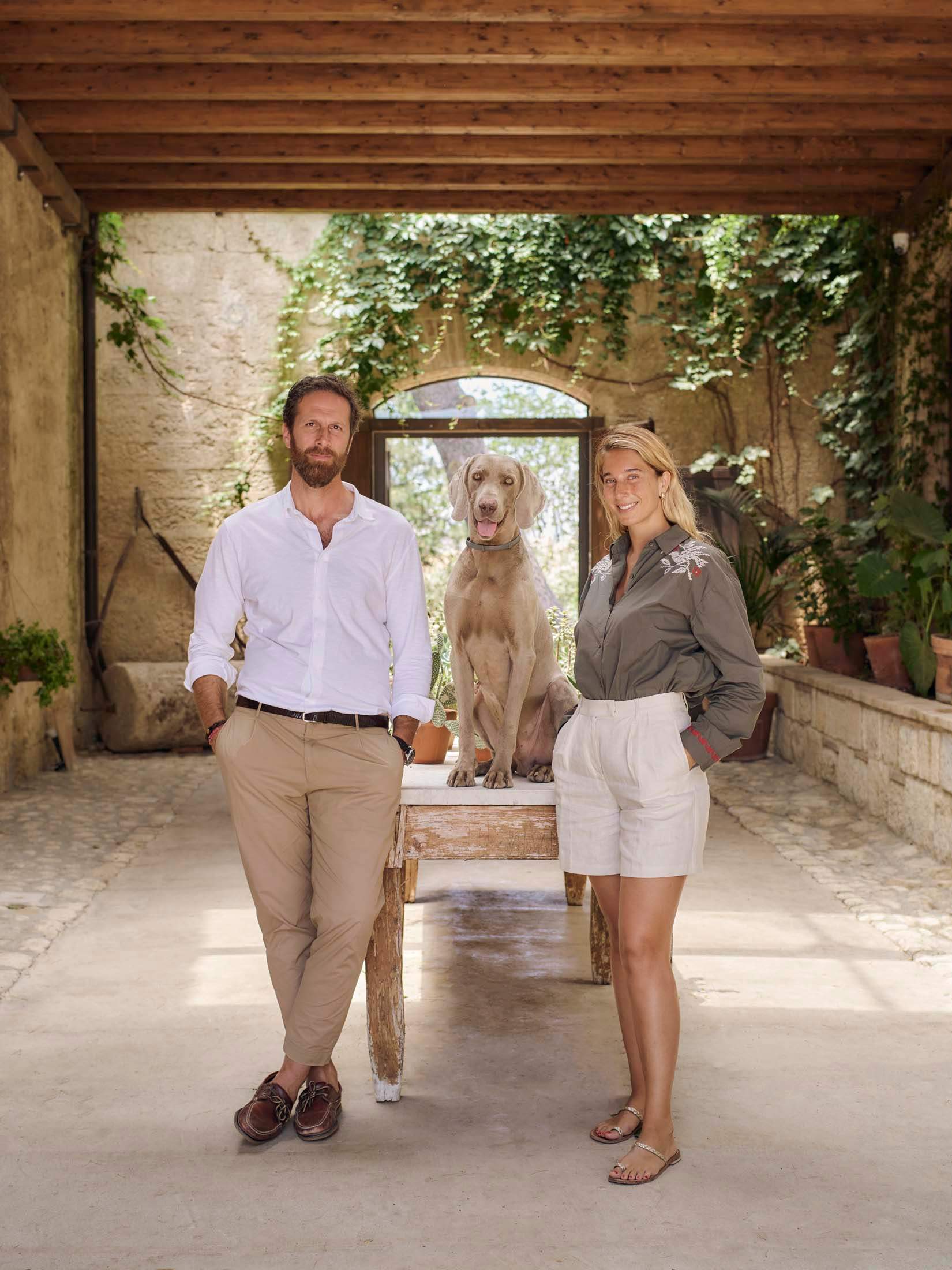
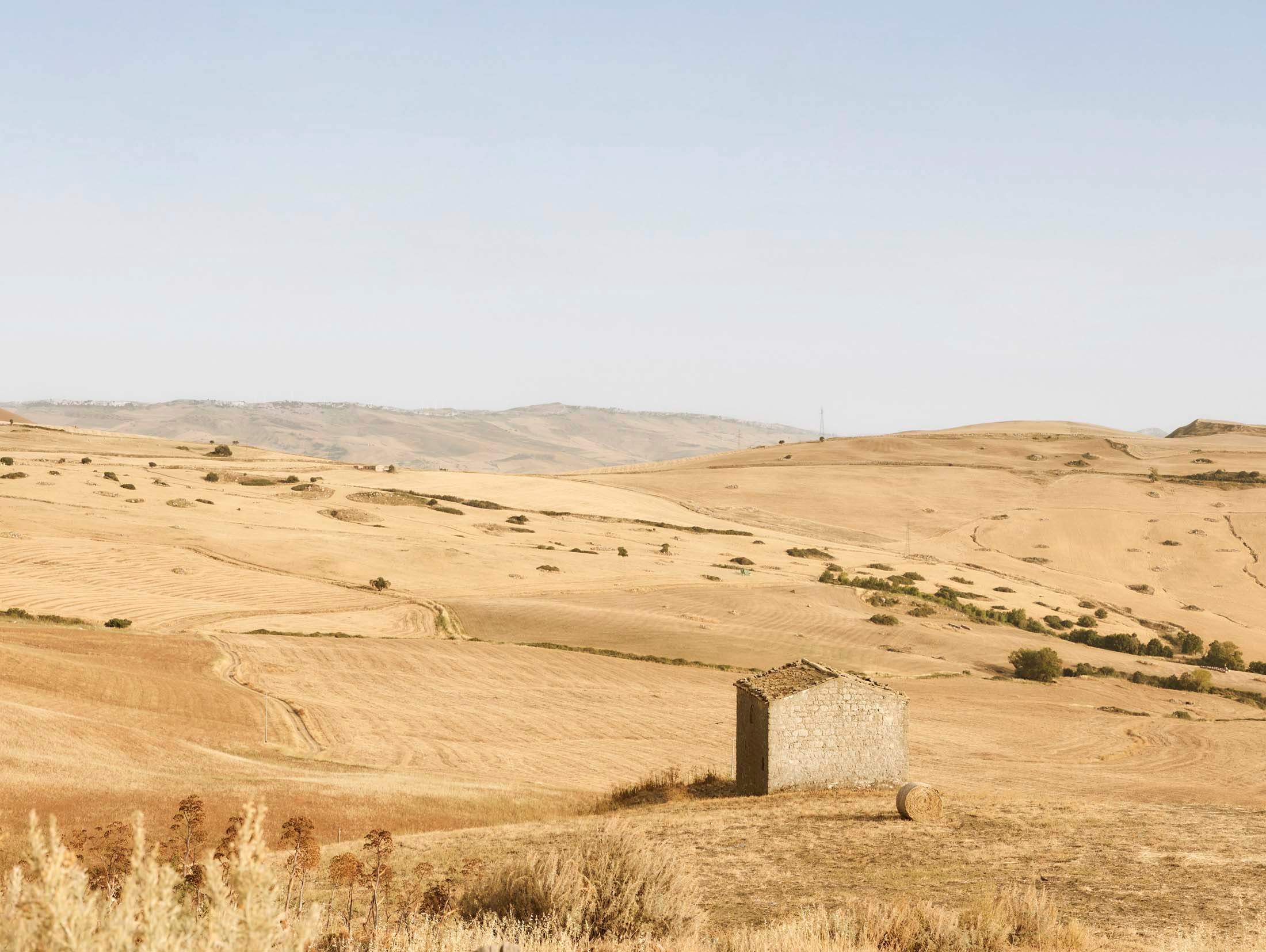
At reception, visitors are taken to the terrace once used to dry nuts and offered a glass of almond milk sweetened with wild black cherries that grow in the nearby hills. Before dinner, Manfredi enjoys giving tours of the farm aboard a vintage Land Rover Defender with his weimaraner, Bruno. On the drive, he stops to show off some of the traditional wheat varieties he started planting in 2018, such as perciasacchi, a fragrant grain that gives more aroma to bread.
Another wheat variety, maiorca, is used to make cakes and pastries such as cannoli. You’ll find it in the Susafa kitchen, where chef Rita leads cooking courses on how to prepare Sicilian specialities such as arancini. In addition, guests can purchase a selection of dried pasta, tomato sauce and jam from the hotel, or go a step further and adopt a portion of a field to help promote Manfredi’s efforts towards sustainable agriculture. “Every year those who support us receive 25kg of flour or 10 litres of olive oil and become active participants in our attempts to maintain ethical practices in the field,” he says.
One of the property’s key selling points is the sunset aperitivo, which Manfredi and his sister Sara organise on a simple platform in the middle of a field, offering sweeping views of the landscape. “It’s hard to imagine another place as enchanting where the phrase ‘back to nature’ really fits,” says Sara, bathed in golden-hour light as she wanders into the thigh-high wheat in search of Bruno.
The family’s farmhouse dates to 1870 and the siblings were keen to keep key architectural elements intact, such as the sturdy stone walls and wooden ceiling beams. Meals are taken in the former granary and a bar has been erected in a room where the wine press once operated and where Manfredi only serves wines produced on the island. Subtle additions include Sicilian terracotta flooring, while modern accoutrements are present in the form of a minimalist pool area.
“I wanted to create a mood where things move more slowly, almost as if time has stopped; to go back to a time when people went to bed and the only light was a candle,” says Manfredi. “At Susafa you should feel the rhythms of nature and farm life.”
susafa.com
Make a move
Global
Our always-on-the-go technology correspondent shares some top gadgets designed with mobility in mind.
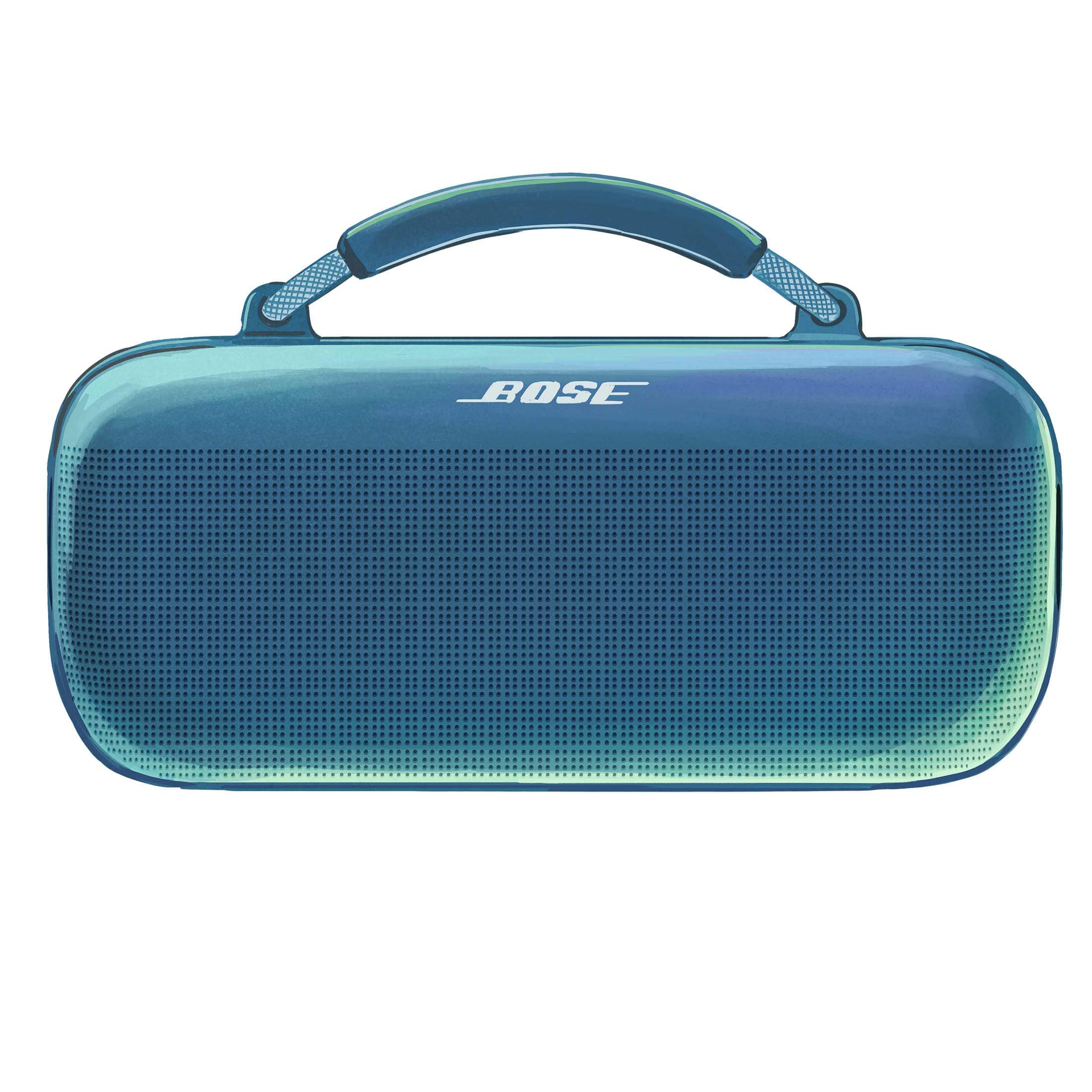
1.
Soundlink Max
Bose
The new Bose speaker is small enough to pack in your carry-on but sounds huge. Rugged enough to resist shocks, water and dust, it boasts a rope handle that can be swapped out for a shoulder-length strap for further versatility. The battery lasts for 20 hours and the speaker can even charge your phone while playing audio.
bose.com
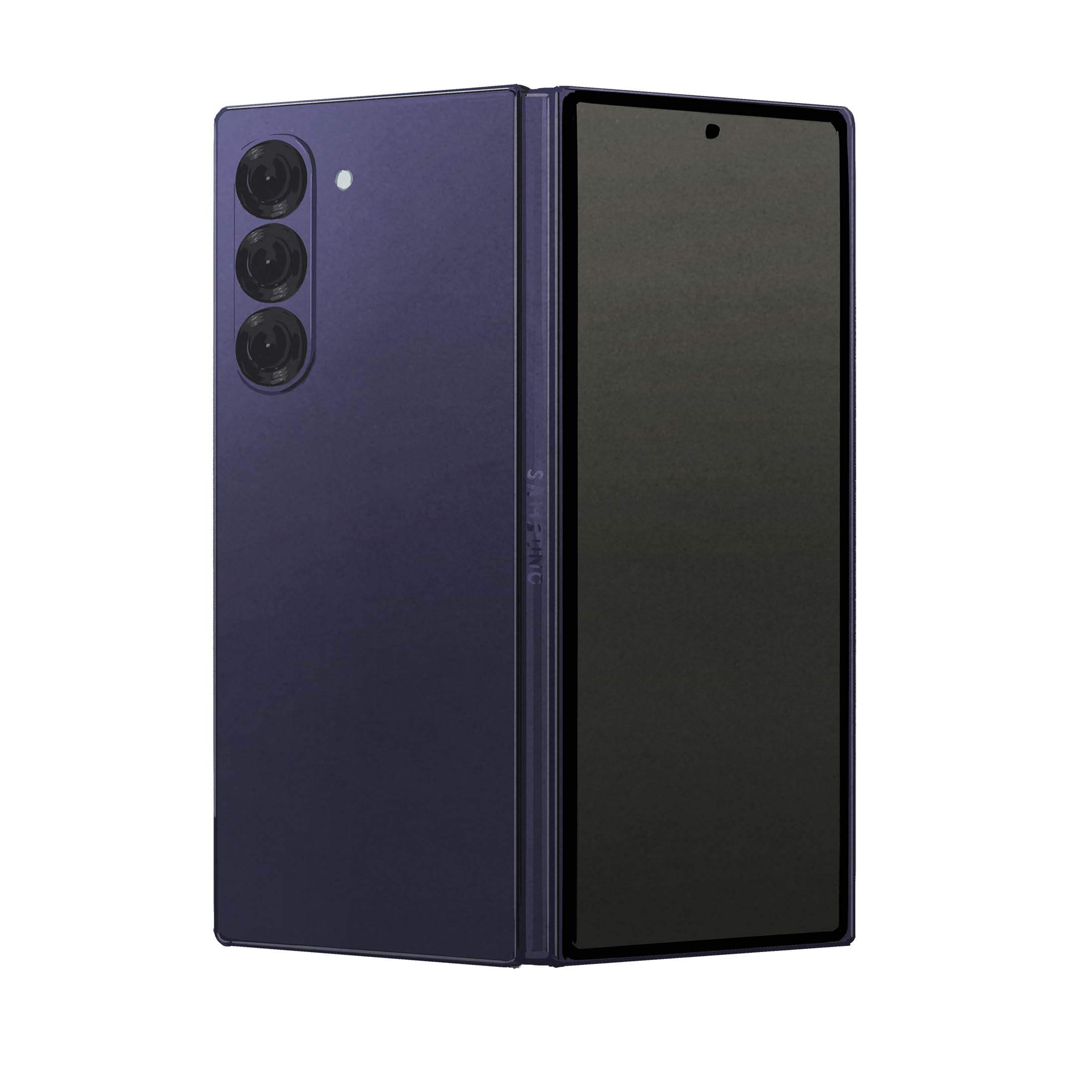
2.
Galaxy Fold 6
Samsung
Leave your tablet at home and take this instead. The new Samsung folds out to a bright and attractive 7.6-inch display with a centre crease that’s now near-invisible in use. An improved camera system, fast processor and larger external display add to the appeal, even if it’s still a little thick when folded.
samsung.com

3.
Tracking Card
Nomad
The new Nomad tracker will help should you ever lose your wallet or have it stolen. It uses Apple’s Find My system, which means it sends a silent message to any passing Apple device when marked as lost, with its location then securely relayed to your own chosen device. Barely bigger than a bank card, it can be charged via any MagSafe charging pad, making its integration into daily life a breeze.
nomadgoods.com
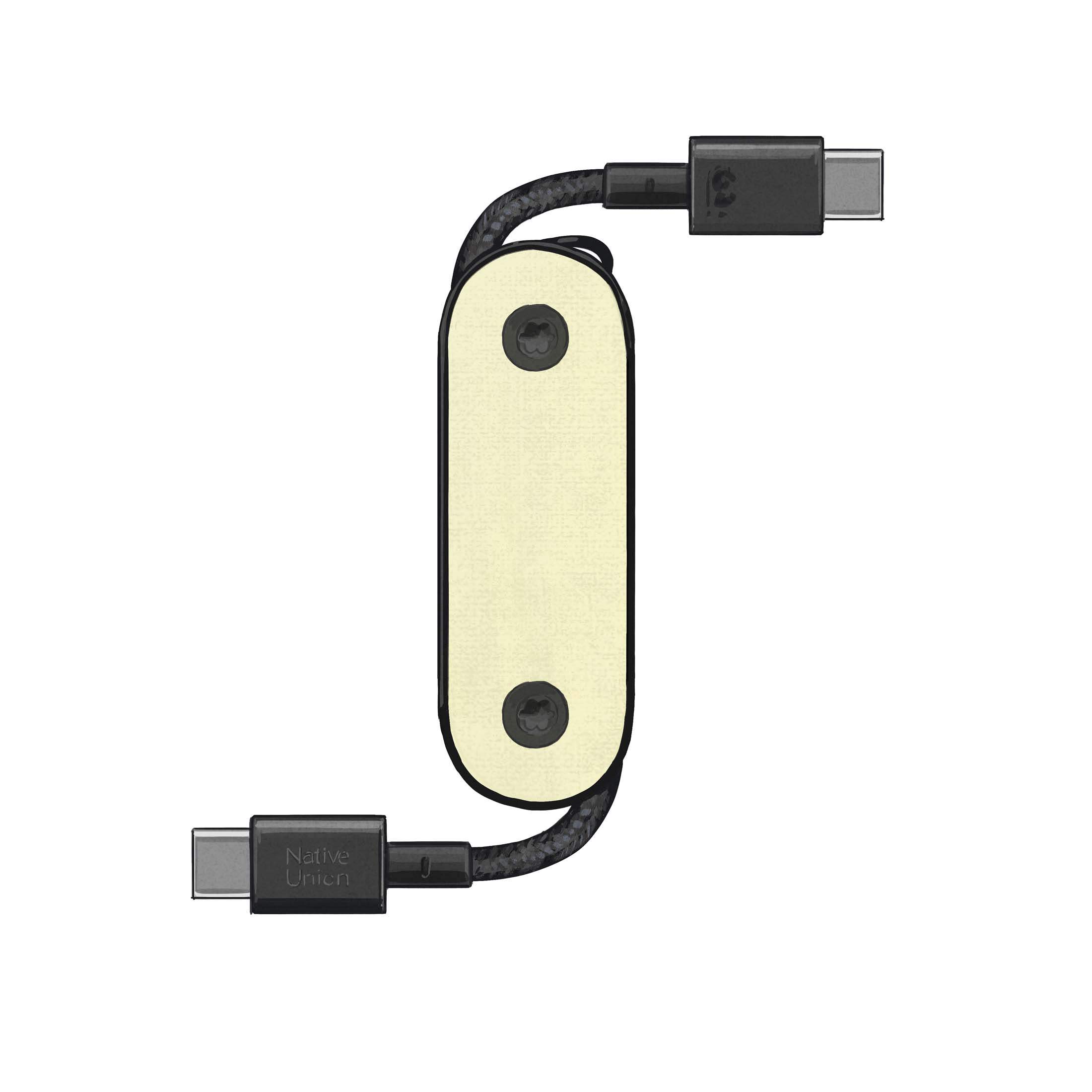
4.
Pocket Cable
Native Union
The new cable from Native Union is superbly pocketable and designed to avoid tangling. It has USB-C connectors at each end of its 17cm cable, with both able to fold back into the case for tidiness. It’s capable of supporting strong charge levels, so it’s compatible with laptops as well as phones. Get it in one of five colours, including an eye-catching bright orange.
nativeunion.com


